
views
X
Research source
Establishing Tradelines

Ask your vendors to provide your business with trade credit. Talk to vendors that you place regular orders with for supplies, ingredients, or inventory. Find out what information they need from you to get a tradeline started. With a tradeline, the vendor essentially extends you credit by giving you a set period of time after you receive a shipment to pay for that shipment. Ultimately, you want net-30 tradelines. These tradelines give you 30 days after you receive your supplies to pay the bill in full. Net-30 tradelines typically also report to business credit bureaus.Tip: Even if you don't order a lot of equipment or inventory on a regular basis, establish tradelines with office supply companies or water distributors.
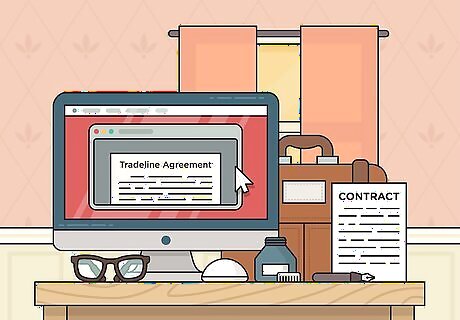
Put any tradeline agreements in writing. Most vendors who offer tradelines have their own contracts already prepared. These are typically standard contracts they use for all tradelines. However, make sure you read it carefully and understand all the terms and conditions before you sign it. A tradeline won't help your business establish credit if you aren't able to meet all the terms of the agreement. If you aren't clear about your business's obligations after reading the contract, don't sign it until you talk to the vendor about it.Tip: Even though these are typically standard contracts, you can still try to negotiate if there's a term in the contact that you don't agree with or don't think applies to your business.

Find out if your vendors report to a credit bureau. Only tradelines that the vendors report to credit bureaus will help establish your business's credit. Ultimately, you want to get at least 5 vendors reporting to the business credit bureaus so you can start pursuing other credit options for your business. Because reporting to business credit bureaus is voluntary, many vendors don't bother to report your payment history. If you explain that you're trying to build your business's credit, however, you might be able to include a reporting requirement in the tradeline agreement.
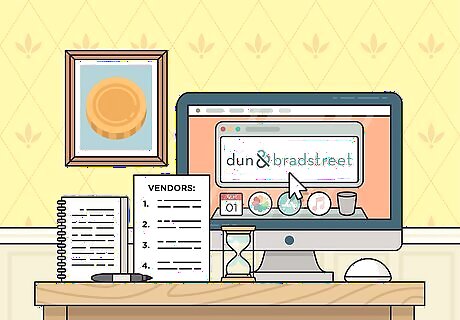
List vendors who don't report as trade references. The Dun & Bradstreet report allows you to list vendors that you have tradelines with as trade references if they don't automatically report your payments to Dun & Bradstreet. Then, Dun & Bradstreet will contact those vendors to get the information about your payment history. Your payment history helps build your Paydex score on Dun & Bradstreet, which tells potential creditors how risky it would be to lend to you. The score ranges from 0 to 100, with a higher score being better. Dun & Bradstreet won't calculate and maintain your Paydex score until you have at least 4 businesses reporting.Tip: Pay reporting vendors early to build up your Paydex score.
Maintaining Your Business Credit Reports

Make sure your business complies with credit market requirements. Even simple things, such as not having a business phone line or not having any required business licenses, will keep potential creditors from lending to your business. Establish a distinct business address, phone number, and email accounts and use them solely for business purposes. For example, if you simply use your personal mobile phone for your business calls, it's a good idea to instead get a separate phone in the name of the business, using the business's EIN. Each of the 3 business credit bureaus has a list of requirements on its website. If your business isn't complying with all of these requirements, it could be hurting your credit score and losing you business.
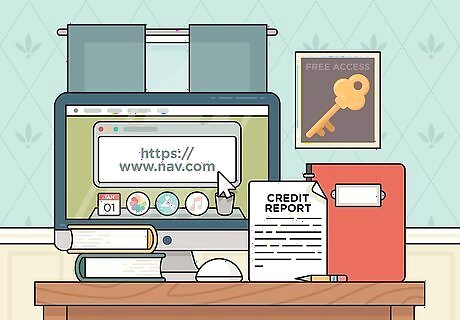
Use Nav to gain free access to your business credit reports. Nav (https://www.nav.com/) is a credit monitoring service for businesses, similar to Credit Karma or WalletHub for individuals. You can set up an account with Nav for free without affecting your business's credit scores. With your Nav account, you can access your Dun & Bradstreet and Experian reports for free. You'll still want to monitor your Equifax report directly through Equifax.
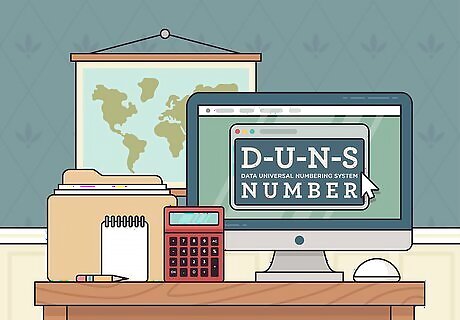
Get a D-U-N-S Number from Dun & Bradstreet. To get a Paydex score that calculates your business's risk to potential creditors, you need this unique number. You can get one for free on the Dun & Bradstreet website. Similar to your EIN, this number is an important part of your business's financial identity. Provide it to any vendors or potential creditors who ask for it.
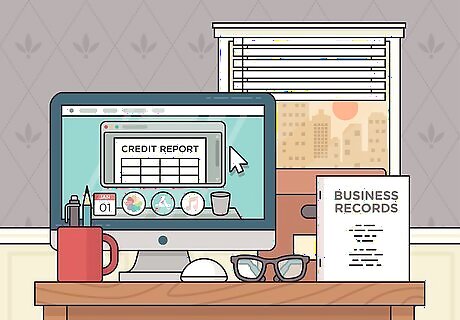
Compare entries to your business records to look for errors. When you go over your business's credit reports, make sure they match up with your records of payments. If something was reported incorrectly, you can either alert the credit bureau to the error or work with the vendor directly to get the entry corrected. For example, you might have a vendor report that you missed a payment, although you, in fact, made the payment 25 days before it was due. If you contact the credit bureau and provide a copy of the invoice or receipt of payment, the credit bureau should be able to adjust the entry. You could also call the vendor and ask them to check their records and correct the report.Tip: Check your business credit reports for errors at least once each calendar quarter. That way, any errors you find won't remain on your business credit report for very long.
Pursuing Other Business Credit

Ask retail stores if they offer business credit accounts. Retail stores typically have lower credit score requirements than banks and major credit card companies, so you'll be able to establish a line of credit with them before you're able to get business credit cards. Once you have at least 5 tradelines reporting to the credit bureaus, you should be able to get some retail store accounts in your business's name. Many retail stores that cater to small business owners, such as Staples and Walmart, offer specific business credit accounts. However, they don't necessarily advertise this option, so you'll have to ask at customer service. There may also be information available on the store's website. However, website credit account information is typically geared toward the consumer.
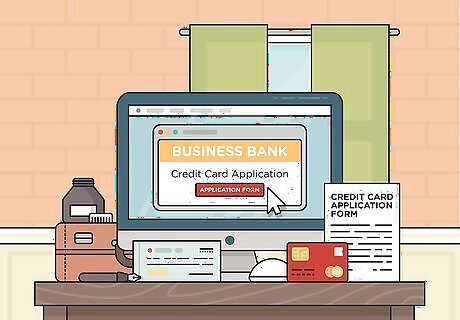
Apply for business credit cards when you have 10 reporting accounts. After you've opened a few retail accounts and have a positive payment history with them for a year or so, you're a good candidate for major business credit cards. Compare banks and credit card companies and apply for the cards with the best resources and perks for your business, such as cash-back bonuses. Credit cards may also offer more flexible financing and lower interest rates for big-ticket purchases, such as equipment upgrades or new computers for your office. Continue using your cards and paying them off every month to maintain consistent usage and build your business's credit score.Tip: You'll get the best rates if your reporting accounts are a mix of tradelines and retail credit accounts. As with personal credit, keep your usage ratio around 20-30% of your available credit.
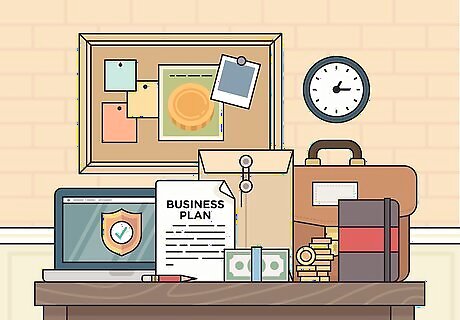
Draft a business plan and financial statements. At this point, you've established that your business can handle credit. You've got 5 or 6 tradelines, 4 or 5 retail credit accounts, and 2 or 3 business credit cards. You're a good candidate for a larger small-business loan from a bank. To get the loan, you'll need a business plan and financial statements that show your business is doing well financially and poised for growth. The business plan shows the lender how you would use the proceeds of the loan to grow and expand your business. For example, you might want to upgrade your equipment or open a new office on the other side of town.
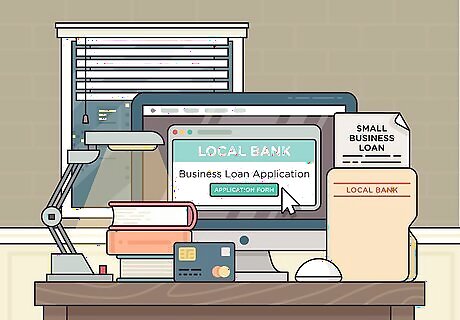
Apply for unsecured lines of credit and small business loans. Your local small business association likely has information on loans that are available in your area. Taking out these loans can help you build your business's credit even further. Start with the bank where you already have all of your other business accounts. Since you already have a relationship with that bank as a customer, you'll be more likely to get a loan.










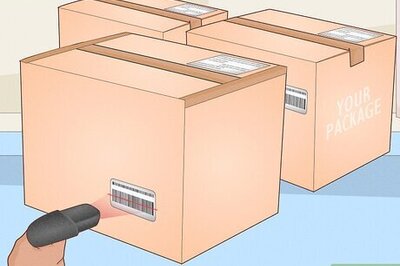









Comments
0 comment